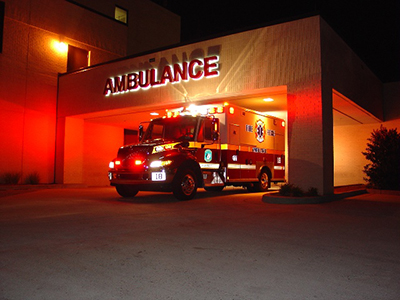 There are workplace safety rules for almost every conceivable category of jobs or tasks, courtesy of the Occupational Safety and Health Administration (OSHA). The underlying law, set out in the Occupational Health and Safety Act of 1970, also requires employers to provide a workplace “free from recognized hazards likely to cause death or serious physical harm.” That requirement falls under the “general duty” clause of law. You can be cited for violating that requirement if a “recognized hazard” is present, and you don’t do anything to eliminate or at least mitigate a medical emergency at work.
There are workplace safety rules for almost every conceivable category of jobs or tasks, courtesy of the Occupational Safety and Health Administration (OSHA). The underlying law, set out in the Occupational Health and Safety Act of 1970, also requires employers to provide a workplace “free from recognized hazards likely to cause death or serious physical harm.” That requirement falls under the “general duty” clause of law. You can be cited for violating that requirement if a “recognized hazard” is present, and you don’t do anything to eliminate or at least mitigate a medical emergency at work.
In addition, according to OSHA, employers must provide medical and first aid personnel and supplies “commensurate with the hazards of the workplace.” Of course, as OSHA states, the needs of your company’s first aid program “are dependent on the circumstances of each workplace and employer.” If OSHA finds your first aid program doesn’t adequately address the hazards of your workplace, the agency might step in to enforce its own standards.
A Safety “System”
OSHA does offer guidance in describing work site first aid programs, which the agency deems to be part of “a comprehensive safety and health management system.” Such a system entails:
- Management leadership and employee involvement;
- Work site analysis;
- Hazard prevention and control; and
- Safety and health training.
Most Common Injuries and Illnesses
“Bodily reaction and exertion” is a catch-all category of injuries and illnesses (including pulled muscles and heart attacks) that causes the most employee days away from work, according to OSHA. The next four most common are contact with objects and equipment, falls, transportation accidents, and exposure to harmful substances and environments.
The first aid plan should include not only having appropriate first aid equipment on hand, but training enough employees in basic first aid procedures, often including CPR, so that there will always be qualified people around to help when needed. In addition, trained personnel should routinely take refresher courses.
When employees are assigned first aid duties as a part of their job description, they must be trained to comply with OSHA’s “Occupational Exposure to Bloodborne Pathogens” standard for their own protection.
The American Red Cross and the American Safety Council are the largest providers of first aid training.
Put it in Writing
OSHA advises committing your first aid program and policies in writing, and periodically reviewing them to ensure they are up-to-date. It also suggests finding out how long you would expect to wait for an EMT to arrive on site to help in an emergency, and build your policies around that. The longer it will take for an EMT to arrive, the more fully trained your first aid-equipped employees should be, and the more well-stocked your first aid supply kit.
The American National Standards Institute has a standard for the minimum contents of a work site first aid kit (ANSI Z308.1 – 2003) that will satisfy OSHA if you are a small organization with no unique hazards. Otherwise, you’ll need more equipment and more kits.
OSHA believes that “all work sites” are potential candidates for an automatic external defibrillators (AED), which, when put to use in a case of sudden cardiac arrest, dramatically increases a heart attack victim’s chances of survival. The devices are far more effective than CPR, and are not complicated to use. OSHA estimates 10,000 cases of sudden cardiac arrest occur at the workplace annually.
Before acquiring an AED and training employees to use them, however, OSHA says you need to think about physician oversight of your program, compliance with local, state and federal regulations, coordination with local emergency medical services, and establishing a quality assurance program.
Finally, keep in mind that when an employee receives what OSHA defines as “first aid medical treatment” for an illness or injury, the agency considers it a “reportable event” that must be noted in your OSHA 300 Log.
For more information, download OSHA’s guide for First Aid Best Practices.

